1. Almond Oil
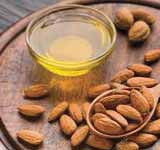
You can use almond oil for both health and beauty. Like almonds, almond oil is also rich in nutrients and minerals. You can also use this oil for cooking and for applying on the face. While the regular intake of almond oil reduces the risk of heart-related diseases, it is also beneficial for mental health. By removing the complaint of anemia, it also works to boost the immune system. Generally people feel that it is beneficial to take something in its original form. But it is not so. All the properties found in almond oil are found in almonds.
2. Avocado Oil
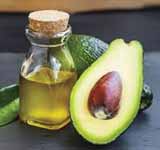
The avocado oil is edible oil. As edible oil, it is used as an ingredient in other dishes and as cooking oil. It is also used for lubrication and cosmetics, where it is valued for its supposed regenerative and moisturizing properties. Avocado oil is found in plenty of vitamins. This oil is mostly used for medicine and food. Avocado oil is extracted from the avocado fruit. Due to the presence of vitamins and antioxidants in this oil, it works to remove skin diseases. Use of this oil can provide relief from obesity, arthritis and inflammation.
3. Canola Oil
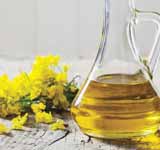
Canola oil is extracted from the seed of the canola tree. It is a part of cabbage, cauliflower and broccoli, including the Brassica family. This oil is extracted by crushing the seeds of Kanola tree, which is then purified and converted and filled in the bottle. Its color is golden yellow, and is mediocre and odorless in taste. This oil tolerates high heat, which can be heated to 242°C. Canola oil is rich in two fatty acids that the human body cannot produce. Alpha-linolenic acid (ALA), which is an essential omega-3 fatty acid.
4. Coconut Oil
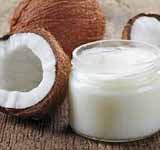
Coconut oil is extracted from the pulp or essence of coconut planted in a coconut tree (Cocos nucifera). It has been the main source of fat in the diet of millions of people throughout the tropical world. It has various utilities in food, medicine and industry. Coconut oil is very hot, so it is an excellent cooking and frying oil. Its smoke point is about 360°F (180°C). Due to its stability, its oxidation is slow, so that it does not run fast and can last up to two years due to the high saturated fat content. Coconut oil is also considered good for the digestive system.
5. Corn Oil
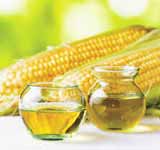
Corn oil is extracted from corn grains. It is mild, slightly yellow in color and faded in taste. The process of refining removes free fatty acids and phospholipids from it, making it suitable for frying. This oil, with high smoking point and mild flavor, can be cooked at high temperatures, does not fade its color and does not absorb any odor, which makes it good edible oil. 23% monounsaturated fatty acids, 60% polyunsaturated acids, 12% saturated acids, and also rich in linoleic and oleic fatty acids. It has significant amounts of vitamin E, vitamin A, vitamin D, iron, and calcium.
6. Cottonseed Oil

Cotton seed oil is a cooking oil that is extracted from the seeds of cotton plants of various species, usually Gossypium hirsutum and Gossypium herbaceum, which can be used as cotton fiber, pet food, and oil. Cotton seeds have a structure similar to other seed oils such as sunflower seed oil. Cottonseed oil has a slight chestnut flavor. Because it is refined, it usually has a limpid appearance, with coloration varying between light gold and reddish yellow. This oil is rich in vitamin D and has plenty of tocopherol, a natural antioxidant. A tablespoon of cottonseed oil can satisfy the body's daily need for vitamin E nine times. However, some nutritionists recommend caution in its use, as it is an oil that contains many unhealthy saturated fats.
7. Grape seed Oil
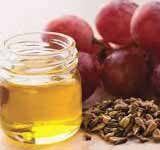
The grape seed oil or grapeseed is a vegetable oil from the seeds of the fruit from the grape. The oil extraction process can be done by two methods: one is chemical and the other is by cold pressing the seeds. Its appearance is that of delicate and pale golden-colored oil. Use of oil made from grape seeds is quite beneficial. Because of the polyunsaturated fat in it, you are protected from many diseases. The use of grapeseed oil in food reduces eye irritation, as well as can help you in protecting against eye and skin diseases. This fruity touch oil makes it an ideal oil to be used cold, especially for marinating meats and preparing vinaigrettes. Its high smoke point of 216°C (point from which smoke comes out of the surface of the hot oil and that does not make it suitable for consumption) allows it to also be used as frying oil.
8. Linseed Oil
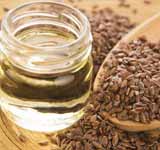
The Linseed oil or flaxseed oil is the seed of the plant Linum usitatissimum (flax). Flaxseed oil is extracted from the seed, which is rich in fatty acids from the Omega 3, Omega 6 and Omega 9 series. This oil is also used in the cosmetic industry, in the manufacture of linoleum and in the dilution for fabric painting. The quality of this varies both with the quality of the raw material used and with the pressing processes used for extraction. Basically, the oil obtained in cold, of higher quality, can be differentiated from that obtained with the help of temperature. The quality varies according to various factors, including the mucilage content. Flaxseed oil is used in medicine as a light laxative, due to its linoleic acid content. In contact with water, the shell of the flaxseed develops a slime that, when ingested, stimulates the receptors located in the intestinal walls that expand and generates excretion as a reflex.
9. Macadamia Oil
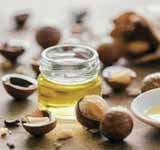
Macadamia oil is a vegetable oil which is obtained from the seeds of the macadamia trees. Cold pressed, it has a light yellow to golden color and a slightly nutty smell. The macadamia nut has a fat content of approx. 75%. The contained triglycerides that tri-fatty acid esters of glycerol are mainly derivatives simple unsaturated fatty acids, especially oleic acid. Macadamias are originally found in the rainforests of Australia, but are also grown in Hawaii, New Zealand, South Africa, Kenya and Central and South America.
10. Mustard Oil

The mustard oil is vegetable oil that comes from the dry pressing of the seeds of mustard. It is frequently used in Indian cuisine as oil for frying food. The flavor of this oil is spicy and produces a slight burning on the palate. Mustard oil is also known as bitter oil. Most Indian people use mustard oil for cooking. Mustard oil is considered very nutritious oil. This oil is used more in winter. Mustard oil can also help protect the body from allergies.
11. Olive Oil

Olive oil is the healthiest edible oil. Use of this oil can protect against diseases like heart disease and diabetes. Apart from these two diseases, regular use of this oil also helps in fighting many more diseases. Olive oil has a sufficient amount of fatty acids which reduces the risk of heart disease. It is very beneficial for diabetics. It has a special role in keeping the amount of sugar in the body balanced. According to experts, the main reason for the low number of heart patients and diabetics in the Mediterranean countries is that olive oil is used as regular edible oil there. People in these countries also have a higher average age than other countries.
12. Palm Oil

Palm oil, coconut oil and palm kernel oil are edible vegetable oils extracted from the fruit of palm trees. Palm oil is extracted from the pulp of the fruit of Palm Elaeis guineensis. The color of palm oil is naturally red, as it contains a high quantity of beta carotene. Palm oil is a common cooking ingredient in the tropical belt of Africa, Southeast Asia and parts of Brazil. Its low cost and high oxidative stability of the refined product at the time of frying are encouraging its increased use in the commercial food industry in other parts of the world.
13. Peanut Oil
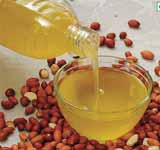
The peanut oil is a vegetable oil prepared either by baking the peanuts or by extraction in a hydraulic press. This oil is very light in color and its suitability to withstand high temperatures makes it is an ideal oil in the kitchen as a frying oil. It has a mild flavor that makes it suitable for making salads, mayonnaise and vinaigrettes. This type of oil is widely used in Asian cuisine. Peanut oil is beneficial for health. The body gets energy due to the rich amount of vitamins and minerals in peanuts. Peanut oil can be beneficial for heart, skin and cancer.
14. Pumpkin seed Oil
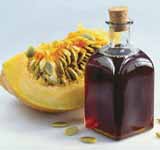
Pumpkin seed oil is obtained from pumpkin seeds by cold pressing. The oil is rich in protein, polyunsaturated fatty acids and zinc. The aroma of pumpkin oil is nutty and the taste has a slight bitterness. The color is from dark yellow and light red to dark green and even almost black, which is why in the countries of Eastern Europe it is sometimes called "black gold". Pumpkin seeds and pumpkin seed oil are found to have anti-inflammatory properties that help a lot in treating arthritis. It is especially beneficial in chronic osteoarthritis and rheumatoid arthritis.
15. Rice bran Oil
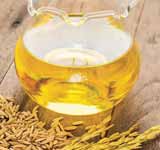
Rice bran oil is extracted from paddy sprouts and inner husk. Oil made from rice bran is considered very beneficial for health. Its smoke point is very high (254°C) due to which it is used to cook food at high temperature. It is used in cooking in many Asian countries. Many types of fats are found in paddy husk, of which 4% are monosaturated, 33% polysaturated, and 20% saturated. Vitamin E, acid and antioxidants are found in this oil, which keeps cholesterol balanced. This oil is used in cooking. Most oil made from rice bran is used in Japan and China.
16. Safflower Oil

Safflower oil is obtained from plant seeds. There are two varieties available - High Oleic and High Linolenic. High oleic safflower oil has monounsaturated fat while high linolenic safflower oil has polyunsaturated fat. Its scientific name is Carthamus tinctorius. It hardens the arteries and prevents a heart attack. It is also used in cosmetics. It reduces the amount of cholesterol in the body. It reduces muscle stiffness and also helps in controlling your blood pressure. Some research suggests that the omega 6 fatty acids in this oil burn the fat present in the body instead of freezing it. Safflower oil contains vitamin-E supplements, which eliminate free radicals from the body and relieve us from the risk of getting cancer.
17. Sesame Oil
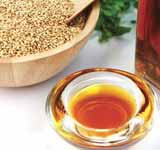
The sesame oil is a vegetable oil derived from the seeds of the sesame, has a distinctive aroma and flavor reminiscent of seeds proceeding. It is used as cooking oil in Southeast Asian kitchens as a flavor enhancer. Sesame oil is delicious to eat. Sesame oil provides the ability to fight many diseases. Sesame oil is very beneficial for diabetes patients. With sesame oil you can avoid many diseases like anemia, cancer, stress and sugar etc.
18. Soybean Oil
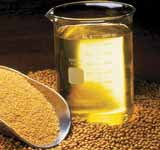
The soybean oil is a vegetable oil that comes from the pressing of the soybean (Glycine max). This oil is abundant in polyunsaturated fatty acids. Crude soybean oil has many beneficial effects on lipid profile and blood pressure, while heated soybean oil is harmful, worsening hypertension, dyslipidemia and also promoting atherosclerosis. Although soybean oil is considered healthy, it balances obesity, diabetes, insulin resistance, and fatty liver. While genetically modified soybean oil called Plenish induces less insulin resistance but produces hepatomegaly and liver dysfunction just as olive oil does, which has similar fatty acid composition (low in linoleic acid and high in oleic acid).
19. Sunflower Oil

Different types of sunflower oil are available on the market: normal oil, with a higher content of linoleic acid, and high-oleic oil, with oleic acid contents that can be up to 90%. In addition, during the last decade the seed companies have developed high-saturated varieties, which allow their use in industrial frying, in the manufacture of margarines, pastries, and ice cream. Vitamin E is found in plenty in sunflower oil. It burns fat, keeps the heart healthy. Reduces cholesterol level and also works to increase taste in food.
20. Tea seed Oil
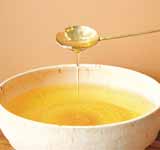
Tea seed oil, it is also known as Camellia oil is a vegetable oil of higher viscosity, which is pressed from the seeds of various types of camellias. In China, Vietnam and Japan, camellia oil is predominantly obtained from the oil-rich species Camellia oleifera and Camellia sasanqua. Tea seed has an ancient tradition in Asia. Known as the Geishas' beauty secret. It is used for the treatment of skin, hair and nails. It is characterized by its rapid absorption and its pleasant smell. It is hydrating and healing. Tea seed is similar to olive oil and grape seed oil in its excellent storage qualities and low content of saturated fat. The oleic acid monounsaturated can provide up to 88% of the fatty acids. It is high in vitamin E and other antioxidants and does not contain trans fat.
21. Walnut Oil
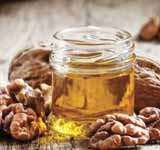
The nut oil or walnut oil is oil extracted from the nuts of the walnut common (species Juglans regia). It is edible oil but quite expensive, it has a slight color and a delicate smell and taste. It is generally not used for frying because it loses some of its distinctive properties. It is usually used in cold dishes and in salad sauces. It has antioxidant properties. Most of this oil is produced in France, but it is also made in Australia, New Zealand, and California. Walnut oil is a good source of the Omega-3 essential fatty acids. It is important to include foods in the diet that can help control diabetes and keep the heart healthy. Use of walnut oil can be a good option for this.
